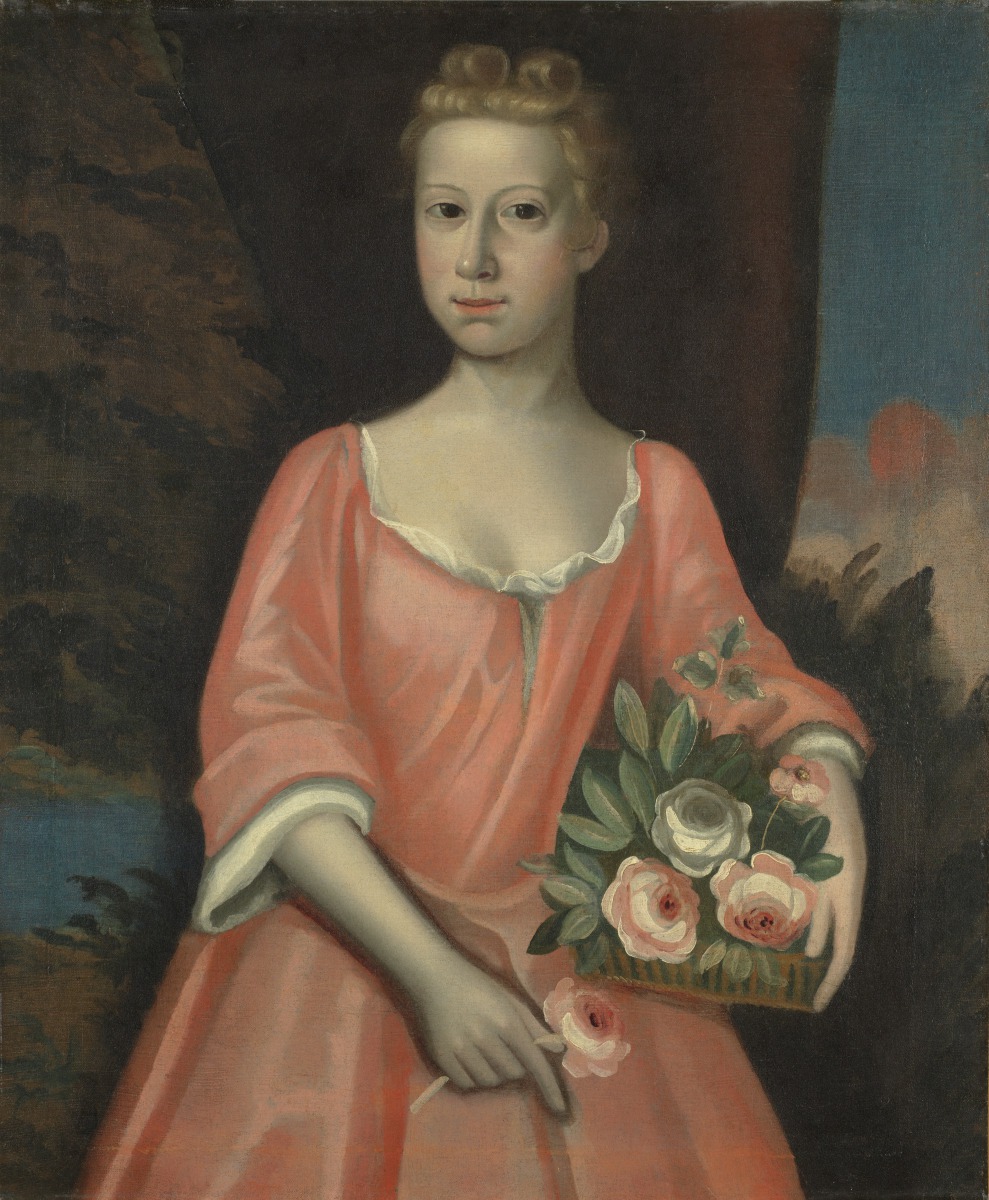
Mary Jaquelin (Primary Title)
Attributed to, Nehemiah Partridge, American, 1683 - 1730 (Artist)
In the early 18th century, affluent British Americans desired portraits of themselves and their loved ones, and a small but growing number of artists – both native born and émigré, trained and self-taught – supplied them. Among the portraitists were itinerant limners (traveling painters) who journeyed throughout the colonies in search of work.
Nehemiah Partridge, a self-taught painter who worked primarily in New England, is believed to have produced this lively portrait. Arriving in Virginia about 1722, he resided in the Jamestown households of Edward Jacquelin and William Brodnax, where he captured the images of more than a dozen family members. Like other provincial limners on both sides of the Atlantic, Partridge found inspiration for his costumes, poses, and backgrounds in British prints.
The period frame on the portrait at right has been “japanned” – painted black, like the striking high chest nearby. While there is no documentation that Partridge made the frame, which is of an age and style appropriate to the painting, he is known to have been a japanner of furniture. In colonial America, the distinction between “art” and “decoration” was fluid.
"The Realist Tradition in American Painting," South Texas Artmobile, August 1976 - May 1977.
"First Flowers of Our Wilderness," Santa Barbara Museum of Art, 11 January - 15 February 1976; The University of Arizona Museum of Art, Tuscon, AZ, 29 February - 28 March, 1976.
"The American Vision-The Early Years," Minneapolis Institute of Art, 1 September 1968-1 August 1969.
"American Folk Art, 1730-1968," Anglo-American Museum, Louisiana State University, Baton Rouge, LA, 1 March - 15 April 1968.
Some object records are not complete and do not reflect VMFA's full and current knowledge. VMFA makes routine updates as records are reviewed and enhanced.

